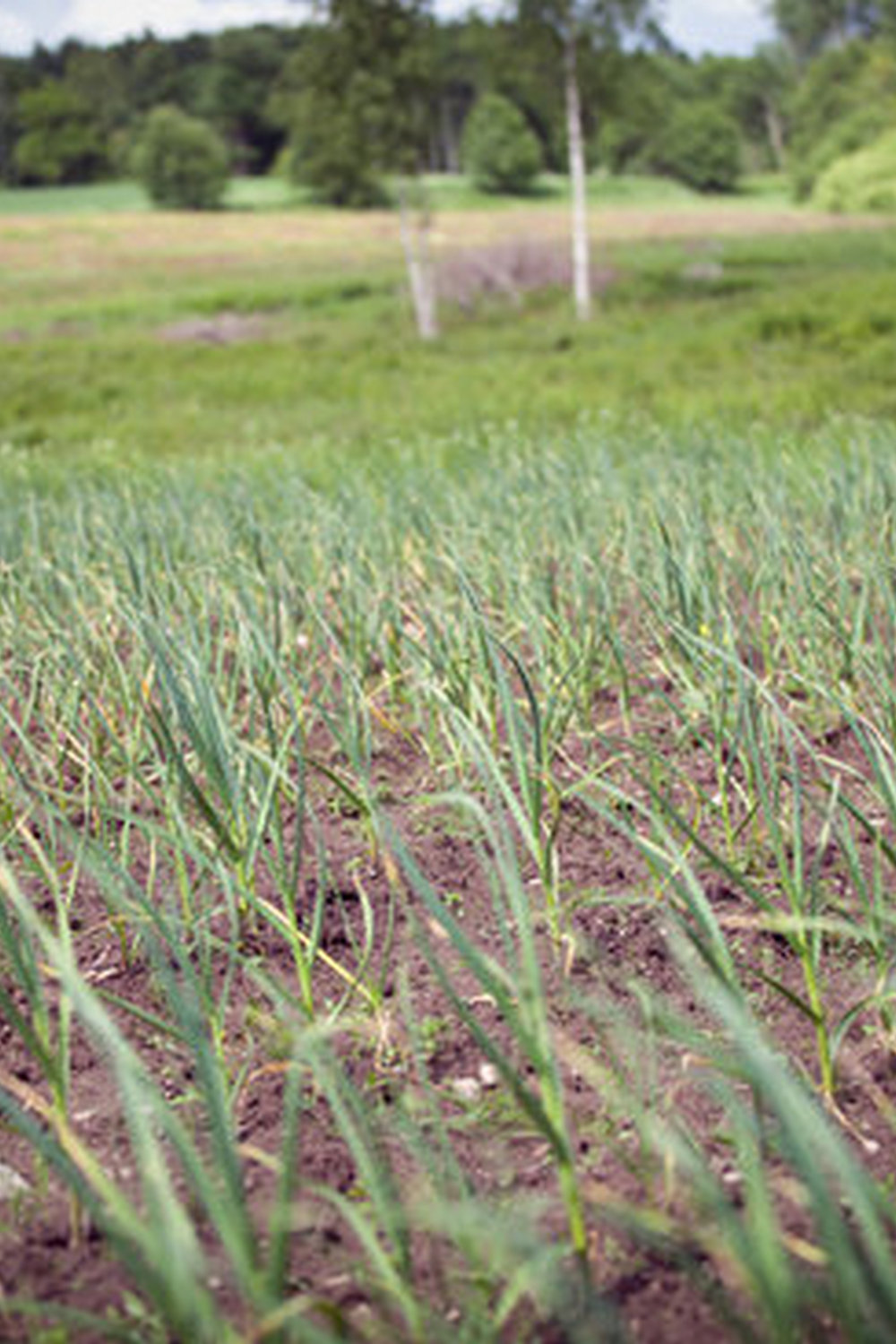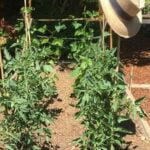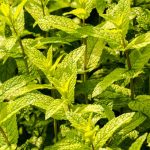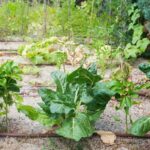Are you considering starting a raised bed vegetable garden in Texas? With the unique climate and soil conditions of the Lone Star State, it’s important to understand the specific considerations for successful gardening. From selecting the best location for your raised beds to choosing the right vegetables, this article will provide valuable insights and tips for raised bed vegetable gardening in Texas.
When it comes to raised bed vegetable gardening in Texas, it’s essential to consider factors such as temperature, sunlight, and soil composition. By following expert advice on soil preparation, plant selection, and irrigation strategies, you can create a thriving garden even in the heat of a Texas summer.
In this comprehensive guide, we will explore everything from preparing your raised beds for planting to managing pests and diseases. Whether you’re a beginner looking to start your first raised bed garden or an experienced gardener seeking new tips and tricks, this article has something for everyone interested in raising their own fresh produce in Texas.
Selecting the Best Location for Raised Beds in the Texas Climate
When it comes to raised bed vegetable gardening in Texas, selecting the right location for your beds is crucial to ensure a successful harvest. Here are some important factors to consider when choosing the best spot for your raised beds:
1. Sunlight: Ensure that your chosen location receives at least 6-8 hours of sunlight per day. This is especially important in Texas, where the sun can be intense. Without adequate sunlight, your vegetables may not thrive.
2. Drainage: Good drainage is essential for raised bed gardening in Texas, as heavy rains can lead to waterlogged soil. Avoid low-lying areas that are prone to flooding and instead opt for slightly elevated spots with well-draining soil.
3. Accessibility: Consider placing your raised beds in an easily accessible area of your garden. This will make it easier for you to tend to your plants, harvest vegetables, and perform maintenance tasks.
By taking these factors into account, you can choose the best location for your raised bed vegetable gardening in Texas, setting yourself up for a bountiful and successful growing season.
Remember that each climate differs from another so it’s always recommended search information according to where you live or want to start growing.
Soil Preparation and Amendments for Successful Raised Bed Gardening in Texas
When it comes to raised bed vegetable gardening in Texas, proper soil preparation and amendments are crucial for successful plant growth. Given the unique climate and soil conditions in Texas, it is important to pay close attention to this aspect of gardening.
One key consideration for soil preparation in Texas raised bed gardens is the use of organic matter. Adding compost, well-rotted manure, or other organic materials can help improve the structure and fertility of the soil. In addition, these organic amendments can help retain moisture, which is especially important during hot and dry periods in Texas.
Another important factor to consider is the pH levels of the soil. Most vegetables thrive in slightly acidic soil, so it’s a good idea to test the pH of your garden soil and make any necessary adjustments. In Texas, where alkaline soils are common, adding sulfur or other acidifying materials may be necessary to achieve the ideal pH for vegetable gardening.
In terms of nutrient management, a balanced fertilizer can be beneficial for raised bed vegetable gardening in Texas. It’s important to provide essential nutrients such as nitrogen, phosphorus, and potassium to support healthy plant growth. Additionally, incorporating micronutrients like calcium and magnesium can also contribute to overall plant health.
| Aspect | Description |
|---|---|
| Organic Matter | Adding compost or well-rotted manure can improve soil structure and fertility. |
| pH Levels | Testing soil pH and making necessary adjustments with sulfur or other acidifying materials. |
| Nutrient Management | Using balanced fertilizer for essential nutrients like nitrogen, phosphorus, potassium, calcium and magnesium. |
Choosing the Right Vegetables for a Texas Raised Bed Garden
When it comes to choosing the right vegetables for a Texas raised bed garden, it’s important to consider the unique climate and growing conditions of the region. With hot summers and mild winters, Texas presents both opportunities and challenges for vegetable gardening. Selecting the appropriate vegetables that can thrive in these conditions is key to a successful raised bed garden.
Heat-Tolerant Vegetables
In Texas, the summer heat can be intense, making it essential to choose heat-tolerant vegetables for your raised bed garden. Some excellent options include tomatoes, peppers, eggplant, okra, and sweet potatoes. These vegetables are well-adapted to withstand the high temperatures and are ideal choices for a Texas raised bed garden.
Short-Season Crops
Texas also experiences mild winters in many areas, which provides an opportunity to grow cool-season crops in raised beds. Vegetables such as lettuce, spinach, kale, radishes, and carrots are suitable for planting in the fall or early spring. These short-season crops can thrive in the cooler temperatures of Texas winters, making them a great addition to your raised bed garden.
Drought-Tolerant Varieties
Given the periodic drought conditions in Texas, it’s beneficial to select drought-tolerant vegetable varieties for your raised bed garden. Options like black-eyed peas, cowpeas, and certain types of beans are well-suited to withstand dry spells and require minimal watering. By including these drought-tolerant vegetables in your garden, you can conserve water while still enjoying a bountiful harvest.
Planting and Spacing Tips for Raised Bed Vegetable Gardening in Texas
When it comes to planting and spacing in your raised bed vegetable garden in Texas, there are a few key tips to keep in mind to ensure a successful harvest. First, it’s important to consider the size of your raised bed and the specific requirements of the vegetables you plan to grow. In Texas, where the climate can be hot and dry, proper spacing can help ensure that your plants have enough room to grow without competing for resources.
One important factor to consider when planting in a raised bed is the concept of square foot gardening. This method involves dividing the growing area into small square sections, typically 1 foot by 1 foot, and planting a specific number of plants in each section based on their space requirements. For example, larger plants like tomatoes may require one square foot per plant, while smaller plants like lettuce can be planted closer together.
In addition to square foot gardening, it’s important to consider the growth habits of the vegetables you plan to grow. Some plants, such as vining crops like cucumbers or squash, may require additional space for their vines to spread out. Other plants, like carrots or radishes, can be planted densely due to their smaller root systems.
Overall, thoughtful planning and consideration of spacing requirements is essential for success in raised bed vegetable gardening in Texas. By taking into account the specific needs of each plant and utilizing techniques like square foot gardening, you can maximize your growing space and ensure a bountiful harvest from your Texas raised bed garden.
Watering and Irrigation Strategies for Raised Bed Gardens in the Texas Heat
When it comes to successful raised bed vegetable gardening in Texas, one of the most crucial factors to consider is proper watering and irrigation strategies. The hot and dry climate of Texas can pose challenges for gardeners, but with the right techniques, it is possible to maintain a thriving raised bed garden.
Choosing the Right Irrigation System
In Texas, where high temperatures and drought conditions are common, selecting the appropriate irrigation system for your raised bed garden is essential. Drip irrigation systems are often recommended for raised beds as they deliver water directly to the base of plants, minimizing evaporation and water waste. Additionally, soaker hoses can also be effective in ensuring that water reaches the roots of plants without wetting the foliage.
Watering Schedule and Techniques
Establishing a consistent watering schedule is vital for the success of a raised bed vegetable garden in Texas. During periods of intense heat, it is often necessary to water more frequently to prevent the soil from drying out. Gardening experts recommend watering in the early morning or late evening to reduce moisture loss through evaporation and minimize stress on plants during the hottest part of the day.
Conserving Water in Raised Bed Gardens
Given the arid climate of Texas, conserving water should be a priority for raised bed gardeners. Mulching around plants can help retain soil moisture, reduce evaporation, and suppress weed growth. Additionally, incorporating organic matter into the soil can improve its water-holding capacity, reducing the frequency of watering while promoting healthy plant growth in a raised bed vegetable gardening setup in Texas.
By implementing these watering and irrigation strategies, gardeners can overcome the challenges of maintaining a healthy raised bed vegetable garden in the hot climate of Texas. With careful planning and attention to hydration needs, it is possible to enjoy a bountiful harvest from your Texas raised bed garden.
Managing Pests and Diseases in Texas Raised Bed Gardens
One of the biggest challenges for raised bed vegetable gardening in Texas is managing pests and diseases. The hot and humid climate in Texas provides the perfect conditions for a wide range of pests and diseases that can wreak havoc on your garden if not properly managed. However, with the right strategies and techniques, you can effectively protect your plants and enjoy a bountiful harvest.
When it comes to pests, common culprits in Texas raised bed gardens include aphids, caterpillars, squash bugs, and spider mites. These pests can quickly damage or destroy your plants if left unchecked. To combat these pests, consider using floating row covers to physically protect your plants or introducing beneficial insects such as ladybugs or lacewings that prey on common garden pests.
In addition to pests, Texas raised bed gardens are also susceptible to a variety of diseases including powdery mildew, blossom end rot, and various fungal infections. To prevent these diseases from taking hold in your garden, it’s important to practice good sanitation by removing any diseased plant material and maintaining proper spacing between plants to promote airflow. Additionally, choosing disease-resistant varieties of vegetables can help minimize the risk of infection.
| Pests | Diseases |
|---|---|
| Aphids | Powdery Mildew |
| Caterpillars | Blossom End Rot |
| Squash bugs | Fungal Infections |
Harvesting and Maintenance of Raised Bed Vegetable Gardens in Texas
Maintaining and harvesting your raised bed vegetable garden in Texas is just as important as the initial planting and care. Here are some tips to help keep your garden thriving:
- Harvesting: After all your hard work, it’s time to enjoy the fruits of your labor. When it comes to harvesting in a raised bed vegetable gardening setup, it’s crucial to pay attention to the harvest times for each specific vegetable you’ve planted. Different vegetables have different optimal harvest times, so be sure to research each crop or consult with local gardening experts for guidance.
- Maintenance: Proper maintenance is key to keeping your Texas raised bed garden healthy and productive. Regular weeding is essential to prevent competition for water and nutrients.
Additionally, keeping an eye out for pests and diseases can help catch issues early on before they have a chance to take over your garden. Regularly checking the irrigation system and making any necessary adjustments will also ensure that your plants are getting the water they need in Texas’ hot climate. - Fertilizing: As your plants grow, they’ll need additional nutrients from fertilizers. Organic options such as compost or fish emulsion can provide the necessary nutrition without introducing harmful chemicals into your garden. Be sure to follow guidelines for application rates and frequency based on the specific needs of your plants.
Following these maintenance tips will help ensure that you have a successful harvest from your raised bed vegetable gardening in Texas.
Success Stories and Tips From Experienced Texas Raised Bed Gardeners
As we have learned throughout this guide, raised bed vegetable gardening in Texas can be highly rewarding and successful with the right knowledge and preparation. By following the tips and strategies outlined in this article, gardeners can ensure a bountiful harvest of fresh, homegrown produce.
One key takeaway from experienced Texas raised bed gardeners is the importance of selecting the right location for your raised beds. The Texas climate can be challenging, so finding a spot with ample sunlight and good drainage is crucial for the success of your garden. Additionally, preparing the soil with the right amendments and choosing the appropriate vegetables for the region are also important factors to consider.
In addition, proper watering and irrigation techniques, as well as pest and disease management, are essential to maintaining a healthy raised bed garden in Texas. By implementing these strategies and learning from those who have successfully mastered raised bed vegetable gardening in Texas, gardeners can look forward to enjoying a thriving and productive garden year after year.
Whether you are a seasoned gardener or just starting out, there’s always more to learn about how to make your raised bed vegetable gardening experience in Texas even more successful.

If you’re looking to get into vegetable gardening, or are just looking for some tips on how to make your current garden better, then you’ve come to the right place! My name is Ethel and I have been gardening for years. In this blog, I’m going to share with you some of my best tips on how to create a successful vegetable garden.





